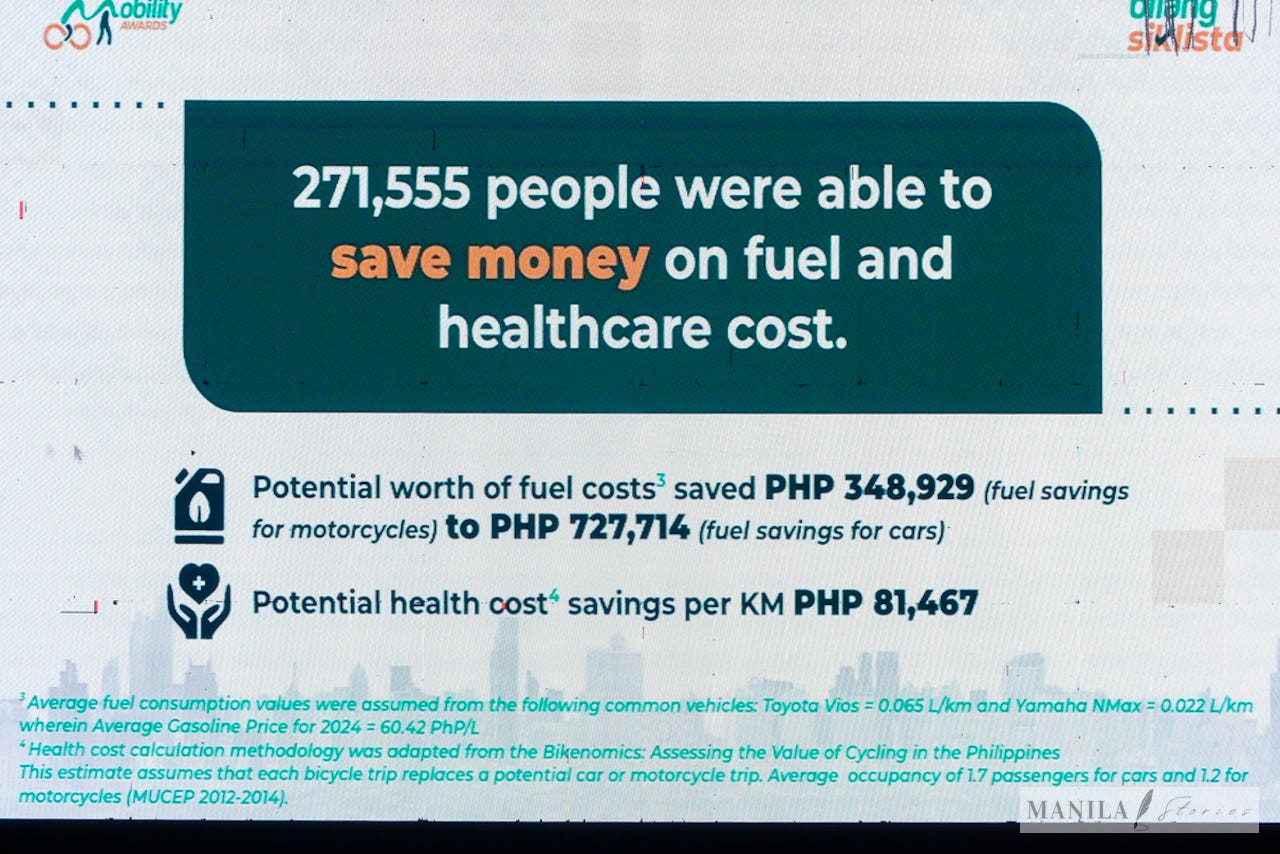
The 2024 Bilang Siklista initiative is a citizen-led bicycle count. It has revealed a significant increase in cycling across the Philippines. This highlights the urgent need for improved cycling infrastructure and safety measures. The count, which involved 1,269 volunteers across 17 cities and one municipality, recorded a 7.2% increase in cyclists compared to last year, with a total of 271,555 individuals counted across 138 locations.
The results underscore the growing popularity of cycling as a mode of everyday transport. This is according to Mobility Awards Coordinator Arielle Celine Tabinga. The trend is particularly notable in the post-pandemic era. “This year’s remarkable count suggests that bike lane projects funded by Bayanihan 2 are being utilized,” Tabinga noted. “Cities with improved bicycle lane infrastructure have seen a corresponding increase in bicycle users.”
This surge in cycling has prompted the Mobility Awards to call on local governments. Policymakers are urged to prioritize investments in protected bicycle lanes. They should focus especially on high-traffic areas and those where LGU initiatives are already underway. The goal is to ensure accessible, safe, and interconnected cycling infrastructure across the country.

Aldrin Pelicano, Co-Convenor of MNL Moves, emphasized the need for systematic monitoring. He highlighted the importance of data collection to assess the effectiveness of cycling infrag⁸structure investments. “Our measure of success for transport infrastructure should focus on transporting people safely. It should also ensure they travel comfortably,” Pelicano stated. “It’s time to prioritize people in our metrics and start counting them.”
The initiative also highlighted the importance of cycling for environmental sustainability. Chuck Baclagon, Co-Convenor of Mobility Awards and 350 Pilipinas, stated that promoting cycling is a crucial step towards reducing emissions. It also improves community health.
However, the count also revealed a significant gender disparity, with only 3% of cyclists being female. Only 56% of cyclists wore helmets. This highlights the ongoing public perception of safety concerns while cycling on city roads.
Quezon City led the count with a daily average of 21,647 cyclists, followed by Mandaluyong City with 20,276. Iloilo City saw the highest growth rate at 49.2%, showcasing the positive impact of its cycling infrastructure investments. Conversely, cities like Baguio and Cagayan de Oro experienced declines. These declines are attributed to challenges posed by hilly terrain. They also face a lack of sufficient cycling infrastructure.
Representatives from government agencies like the DOTr, DPWH, and MMDA participated in the event. They recognized the need for collaboration in improving urban cycling infrastructure. Nazrin Castro, Mobility Awards Co-Convenor, further emphasized the global significance of promoting active mobility. She stated, “Investing in active mobility is a vote for our planet’s salvation…Bicycle count activities become more than just data collection – they pave the way for community engagement on climate-focused solutions.”
The Bilang Siklista initiative highlights the increasing demand for cycling. It emphasizes cycling as a sustainable and accessible mode of transport. Ns the need for a collaborative effort to create safer and more inclusive cycling environments for all.




